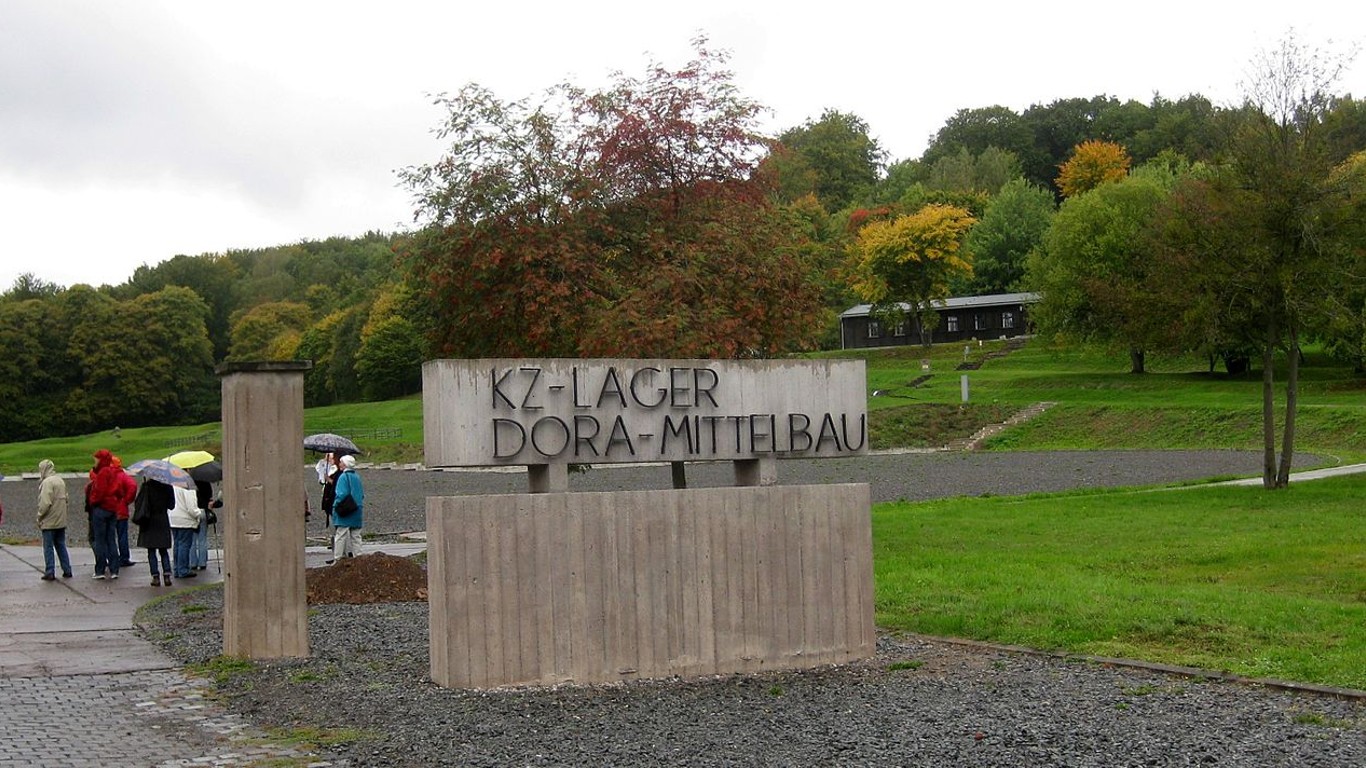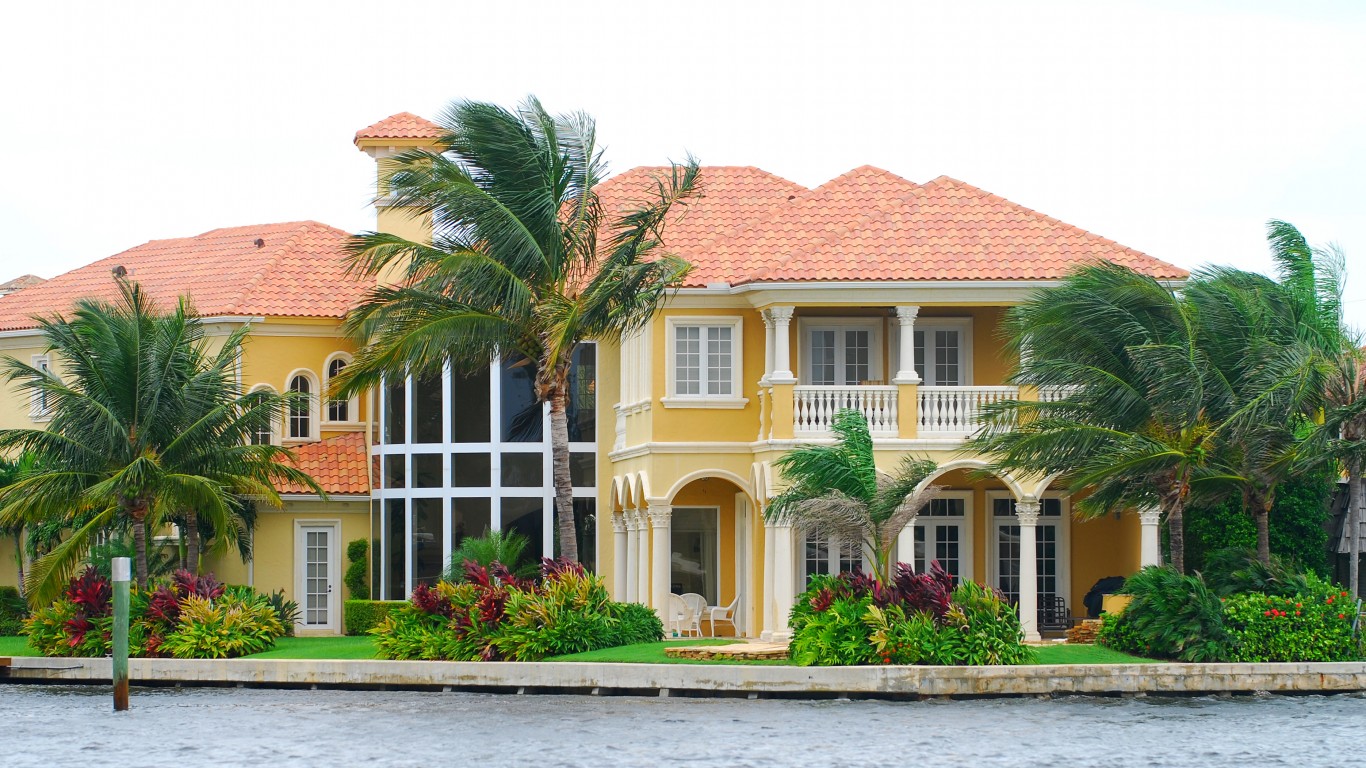
There are many indelible images of the Second World War: the flag-raising on Iwo Jima; the Russian soldier hoisting a red banner signifying victory at Stalingrad; crowds thronging the streets on V-E Day in London…. But the images that most unforgettably define the cruelest era of humankind are those showing the piles of bodies and the masses of nearly dead prisoners discovered after the liberation of the concentration camps. (These are some horrifying images of Nazi death camps.)
While he was in prison following the failed attempt to take over the government in Bavaria in 1923, Adolf Hitler wrote his autobiography, “Mein Kampf.” It expressed key tenets of Nazism, such as virulent antisemitism; contempt for Bolshevism and the belief that Slavs were subhuman; and the necessity of seizing “living space” in Eastern Europe for Germany.
After Hitler gained power in 1933, the Nazis began setting up concentration camps to incarcerate political enemies of the regime, as well as intellectuals, homosexuals, communists, gypsies, and – most of all – Jews. The Kristallnacht pogrom in 1938 accelerated the rounding up of Jewish citizens for these camps, at first primarily to be used for forced labor.
In January 1942, however, after the Germans had overrun Poland and much of Western Europe and invaded the Soviet Union, Nazi officials convened at a villa in the Berlin suburb of Wannsee to decide on a ”permanent solution” to what they called the “Jewish problem.” From that conference came the creation of a network of extermination camps intended to wipe out the Jews in Europe.
The Nazis and their allies established more than 44,000 camps and sub-camps and other incarceration sites, including ghettos, between 1933 to 1945, using them as transit points for temporary detention of prisoners, and for forced labor, medical experiments, and ultimately the extermination of Jews and other perceived “undesirables.” (These are 30 symbols used by the Nazis to mark their victims.)
Click here to see 25 infamous Nazi concentration camps
To compile a list of 25 of the most infamous concentration camps built by Nazi Germany before and during World War II, 24/7 Tempo exercised editorial discretion after consulting numerous news and Jewish heritage sites, including the Jewish Virtual Library, the United States Holocaust Memorial Museum, and the Wiener Holocaust Library.
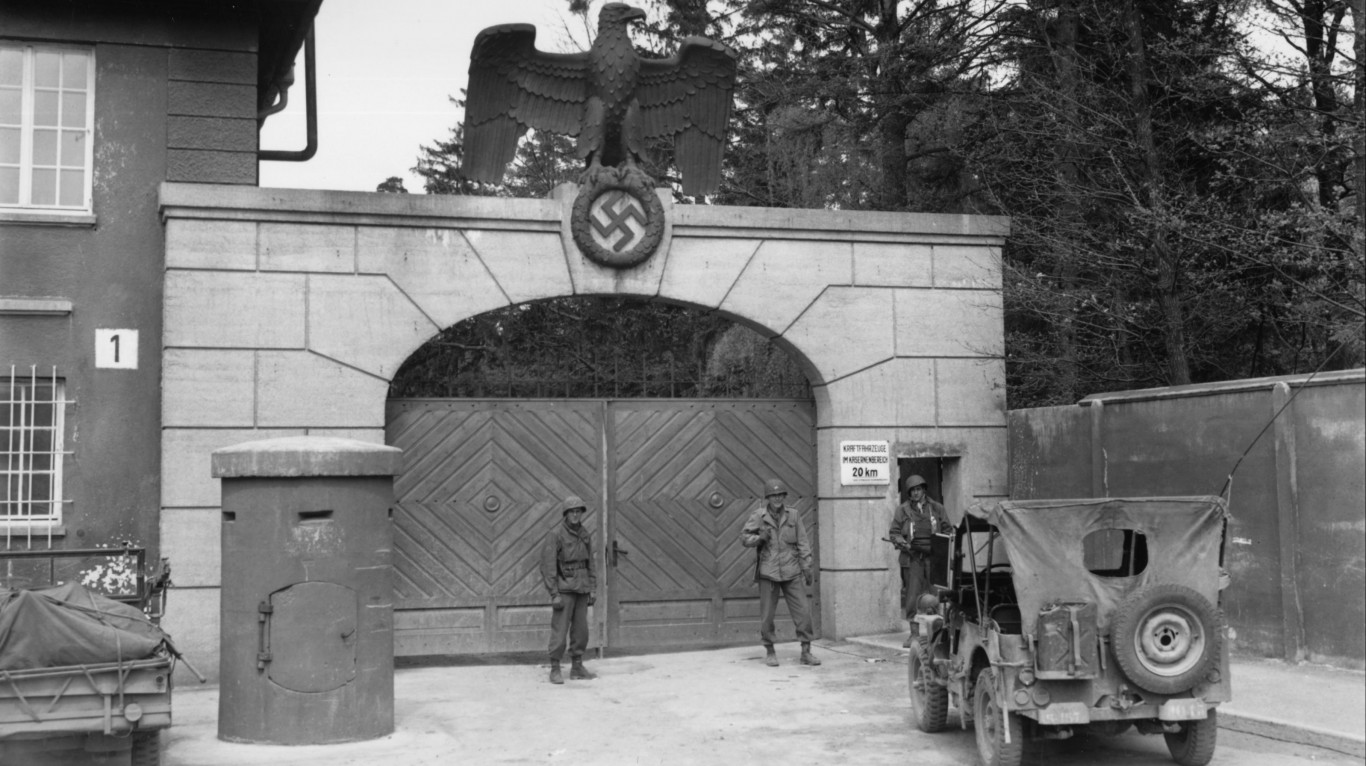
Dachau
> Country: Germany
> Years active: 1933-1945
> Purpose: Forced labor
> End: Liberated by U.S. troops
> Status today: Museum
Dachau, just outside of Munich, was the first major Nazi concentration camp, opened on March 10, 1933, and would serve as the template for future camps. Initially it housed intellectuals, artists, homosexuals, those mentally and physically challenged, and others that the Nazi regime deemed unfit for nation. Many prisoners died from malnutrition. They also were subjected to horrific medical experiments. In time, it would become one of the most vivid symbols of the Nazi machinery of death.
[in-text-ad]

Oranienburg
> Country: Germany
> Years active: 1933-1935
> Purpose: Holding center
> End: Destroyed
> Status today: Not maintained
Opened on March 21, 1933, in east Prussia, Oranienburg, was another of the earliest concentration camps. It was run by the Sturmabteilung, or SA, the paramilitary wing of the Nazi party, which helped Hitler gain power. After the SA was purged by Hitler during the bloody Night of the Long Knives, the SS took over running the camp, until it was closed in 1935. The camp’s first prisoners were German political prisoners – mostly Communists and Social Democrats
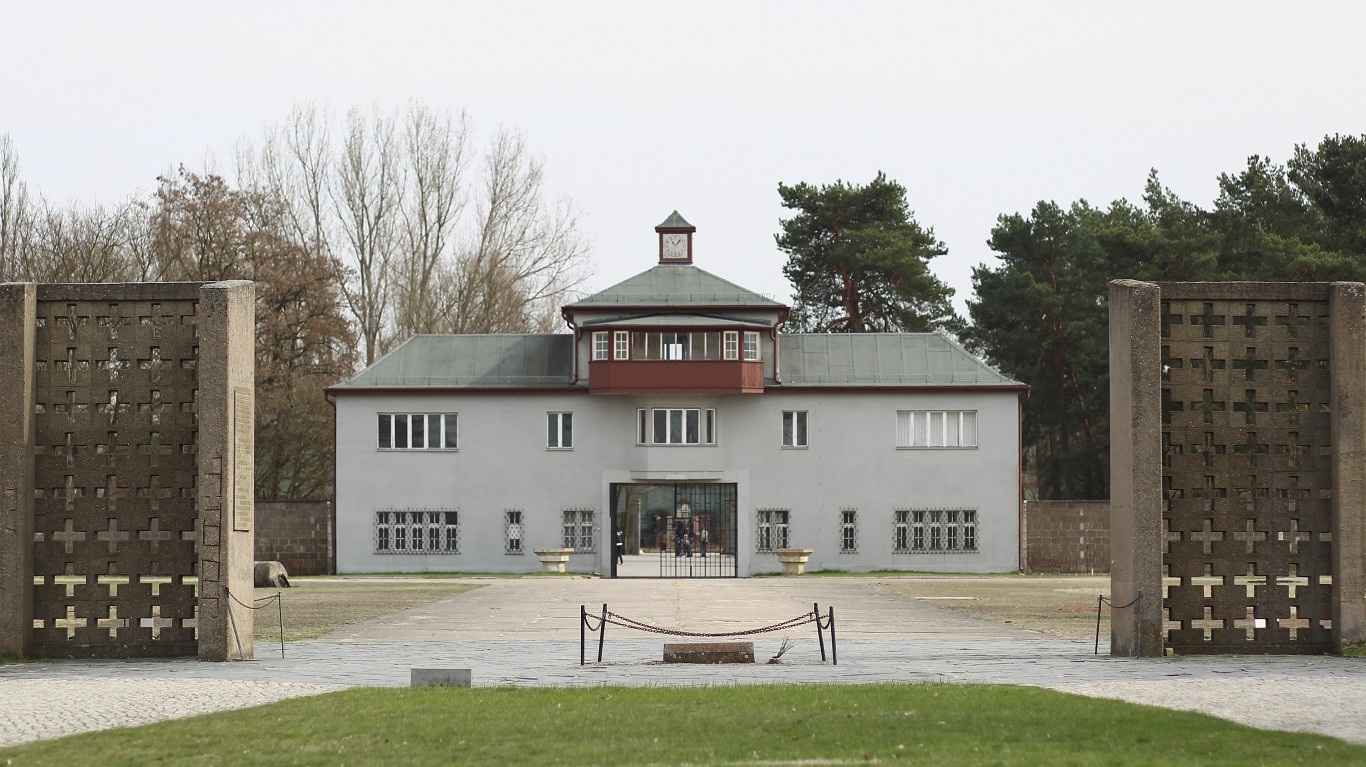
Sachsenhausen
> Country: Germany
> Years active: 1936-1945
> Purpose: Forced labor
> End: Liberated by Soviet troops
> Status today: Museum
Sachsenhausen, located near the Oranienburg camp, north of Berlin, opened on July 12, 1936. Its inmates were mostly political prisoners, including former Austrian chancellor Kurt von Schuschnigg; Joseph Stalin’s son, Yakov Dzhugashvili; and the onetime prime ministers of France and Spain. The camp also served as a prisoner-of-war camp for Soviet soldiers, and following the Kristallnacht pogrom in November 1938, the camp received 6,000 Jews.

Buchenwald
> Country: Germany
> Years active: 1937-1945
> Purpose: Forced labor
> End: Liberated by U.S. troops
> Status today: Museum
Buchenwald, established in east-central Germany, was one of the biggest concentration camps in the country and among its most notorious. It first opened in 1937 for male prisoners. Women were brought in in 1944. Most of the first inmates were political prisoners until 1938, when, following Kristallnacht, the Nazis interned Jewish inmates there. During the war, Buchenwald became a major source of forced labor. Its prisoner population soared to 110,000, and the camp oversaw 87 sub-camps. As the war wound down, prisoners seized control of the camp and U.S. troops later liberated it.
[in-text-ad-2]
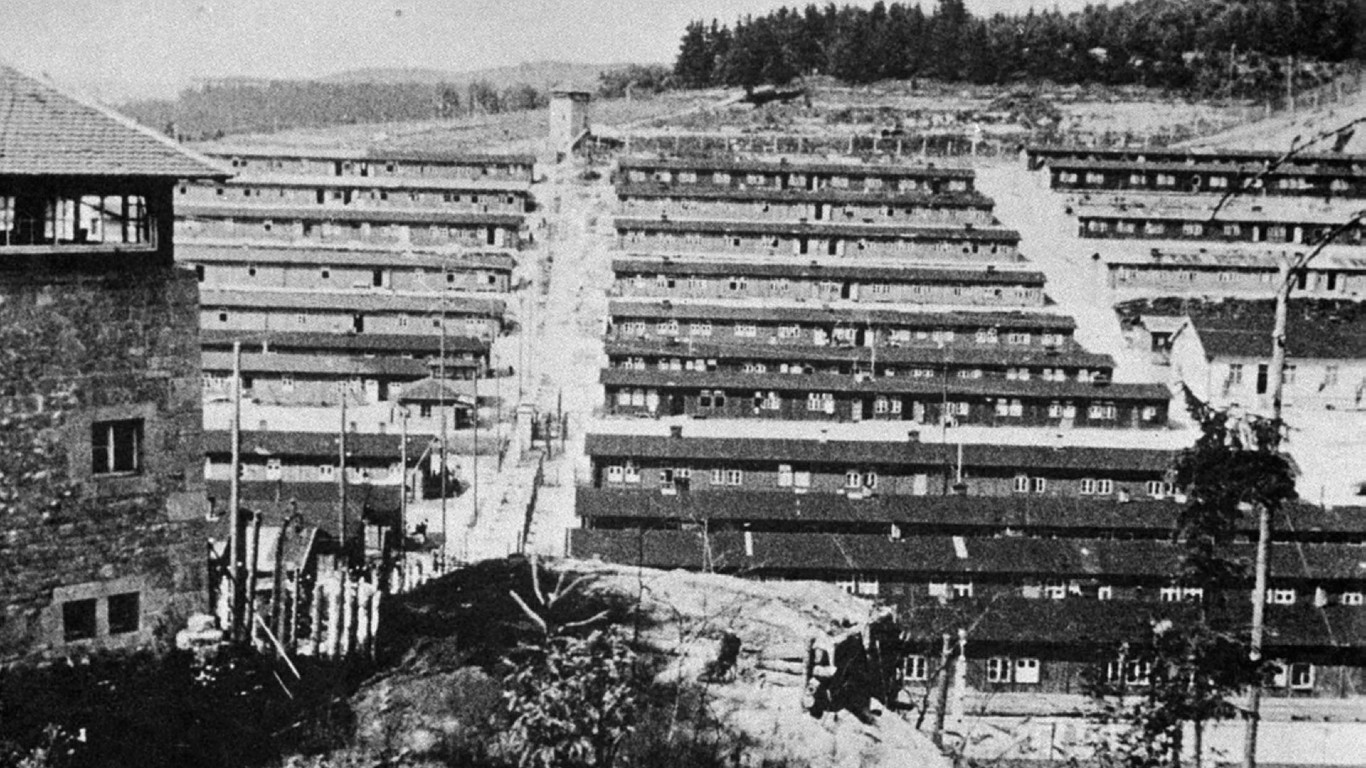
Flossenbürg
> Country: Germany
> Years active: 1938-1945
> Purpose: Forced labor
> End: Liberated by U.S. troops
> Status today: Monument
Flossenbürg was a forced-labor camp in Bavaria’s Fichtel Mountains, where prisoners were forced to work in stone quarries. Flossenbürg and its sub-camps held at least 100,000 prisoners at various times, many of whom died from malnutrition or the results of poor hygiene and shortage of medical care. In the last days of the war, the SS forced 14,000 prisoners on a death march in which 4,000 died before the rest were saved by a U.S. unit.

Mauthausen-Gusen
> Country: Austria
> Years active: 1938-1945
> Purpose: Forced labor
> End: Liberated by U.S. troops
> Status today: Monument
Mauthausen-Gusen was established by the Nazis shortly Austria was absorbed by the Third Reich in the Anschluss of March 1938. The camp was located in upper Austria, three miles outside of the town of Mauthausen. It oversaw 49 sub-camps. After the war started, many of the prisoners were Spanish refugees who had fought against the fascist forces of General Francisco Franco in the Spanish Civil War, then fled to France – and turned over to the Germans after France’s fall in 1940. Among the camp’s other prisoners were Soviet soldiers, communists from various nations, and Jewish inmates. In May 1945, 81,000 prisoners were liberated from the camp by the U.S. Army.
[in-text-ad]
Hartheim
> Country: Austria
> Years active: 1939-1945
> Purpose: Killing facility
> End: Liberated by U.S. troops
> Status today: Memorial
Hartheim, opened in 1939, was a killing center that murdered those with physical and mental disabilities by poison gas and lethal injection as a part of the Nazis’ Aktion T4 of forced euthanasia. The center was located in a castle in northern Austria, near the city of Linz.
Many clergy members were murdered there, as was Aloisia Veit, a relative of Adolf Hitler, who was killed due to “abnormal behavior.” The center was dismantled by January 1945 and many documents were destroyed, though a U.S. Army unit later found a trove of them, detailing the activities at the castle.
Ravensbrück
> Country: Germany
> Years active: 1939-1945
> Purpose: Forced labor
> End: Liberated by Soviet troops
> Status today: Monument
Ravensbrück, located 50 miles north of Berlin, was a camp for women, opened in 1939 with a capacity for 6,000. Between May of that year and June 1944, however, about 43,000 women were brought there – and that number doubled after women were evacuated from Auschwitz in January 1945. The camp, which had 34 satellite divisions, became a slave-labor center, where, among other tasks, women made electrical parts for the V-1 and V-2 rockets. Brutal medical experiments were also practiced there and gas chambers and crematoria were added to the camp toward the end of the war.
Stutthof
> Country: Poland
> Years active: 1939-1945
> Purpose: Forced labor
> End: Liberated by Soviet troops
> Status today: Museum
Stutthof, located near Danzig, was the first concentration camp established outside of Germany and Austria, and the last camp anywhere to be liberated. It initially housed what were considered “undesirables” – civilians captured by the Germans after they invaded Poland. It was converted to a concentration camp in 1942, and two years later became an extermination camp. It was at Stuffhof that Nazis produced soap from the human fat of their victims, using a process invented by an SS officer and scientist who owned a soap factory near Danzig.
[in-text-ad-2]

Westerbork
> Country: Netherlands
> Years active: 1939-1944
> Purpose: Transit
> End: Liberated by Canadian troops
> Status today: Monument
The Westerbork camp, the only facility on this list in the Netherlands, was located in the countryside in the northeastern part of the country, near the German border. The Dutch had originally set up the camp to accommodate German Jews fleeing the Nazi regime. When the Nazis conquered the Netherlands in 1940, they converted the facility into a transit camp from which prisoners were eventually sent to killing centers at Auschwitz and Sobibor, with deportations occurring every Tuesday. The most famous person to pass through the camp was Anne Frank, who was sent from here to Auschwitz. The transports stopped in September 1944 and Canadian troops liberated Westerbork in April 1945.
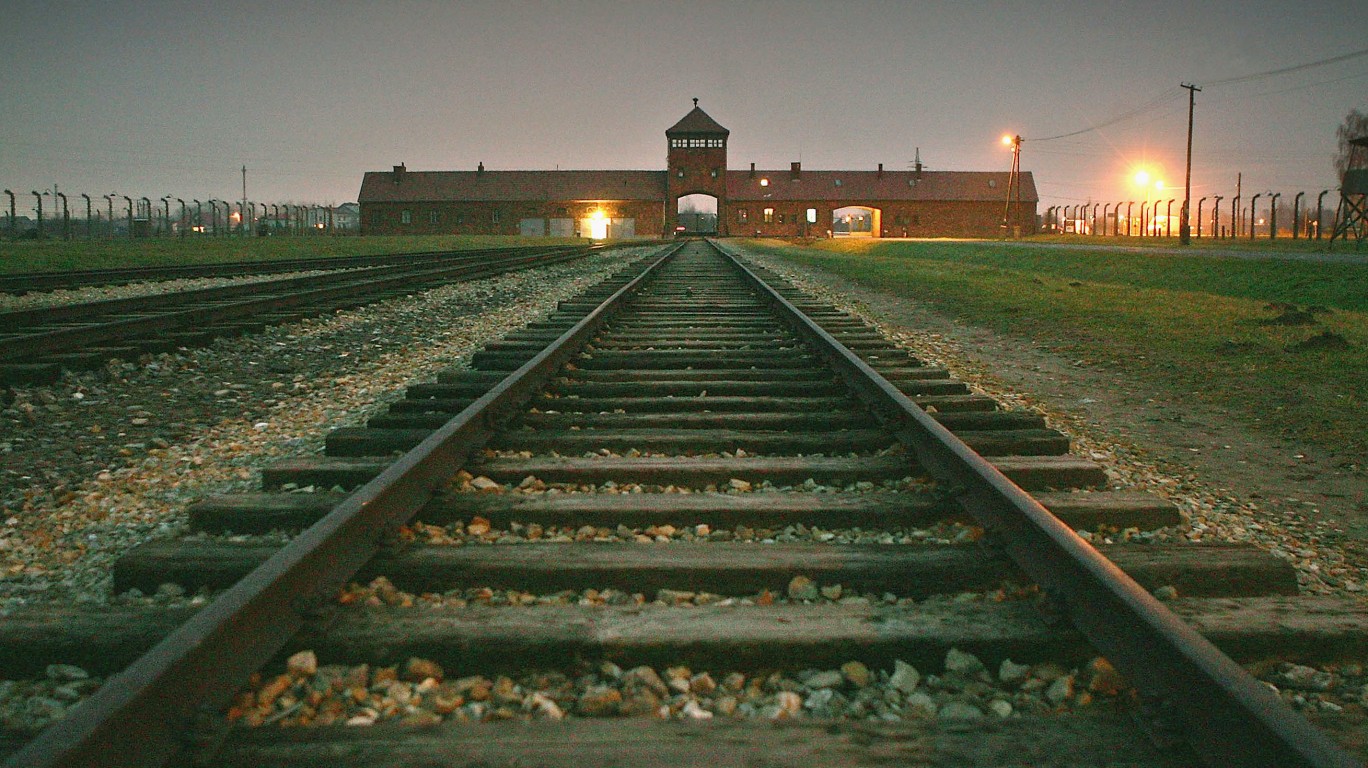
Auschwitz-Birkenau
> Country: Poland
> Years active: 1940-1945
> Purpose: Killing facility; forced labor
> End: Liberated by Soviet troops
> Status today: Museum
Auschwitz-Birkenau, about 40 miles west of Krakow, was where the most gruesome horrors of the “Final Solution” were realized. It became a searing symbol of Nazi evil, and the most extreme expression of their crimes against humanity. The scale of the atrocities at the camp, a complex of three facilities, is almost beyond comprehension; 1.1 million people perished there, virtually all of them Jews. It was also at Auschwitz where Nazi physicians such as Josef Mengele performed quasi-scientific research on infants, twins, and dwarfs, as well as forced sterilizations and castrations of adults. The camps were opened over a two-year period beginning in 1940, and oversaw many sub-camps.
[in-text-ad]
Gross-Rosen
> Country: Germany
> Years active: 1940-1945
> Purpose: Forced labor
> End: Liberated by Soviet troops
> Status today: Museum
Originally built as a sub-camp for the Sachsenhausen concentration camp in 1940, Gross-Rosen, located in what is now western Poland, became an autonomous camp in 1941. The needs of the Nazi war effort caused the regime to use prisoners to produce armaments at Gross-Rosen. The camp became the center of an industrial complex and the administrative hub for about 97 sub-camps. Prisoners worked for companies such as Krupp, I.G. Farben, and Daimler-Benz. The camp also held one of the highest populations of female prisoners.
One of the facility’s sub-camps was Brünnlitz, in a former factory established by Oskar Schindler across the border in Czechoslovakia. After the Kraków-Płaszów camp in German-occupied Poland closed, 1,100 Jewish prisoners were sent to Brünnlitz and survived the war.
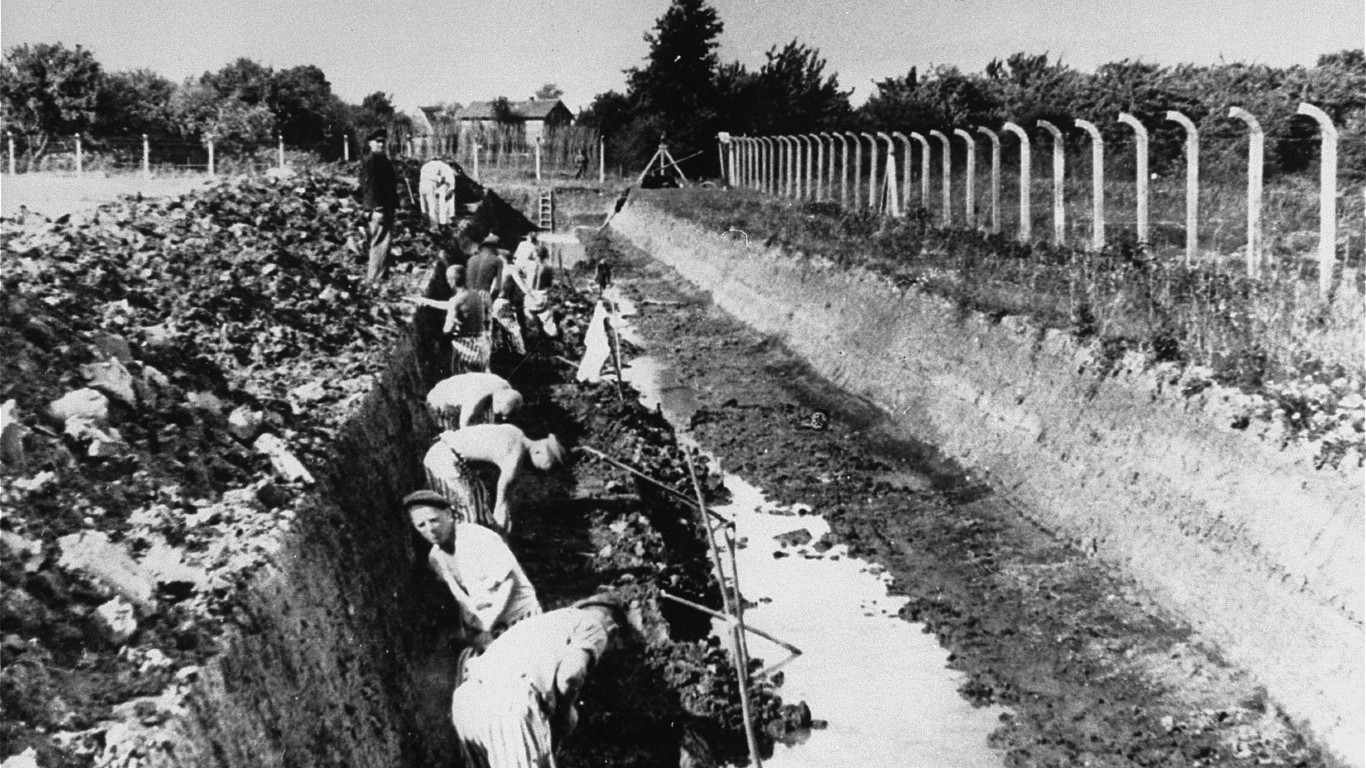
Neuengamme
> Country: Germany
> Years active: 1938-1945
> Purpose: Forced labor
> End: Liberated by British troops
> Status today: Monument
Neuengamme was opened at a former brickworks facility as a sub-camp of Sachsenhausen in a suburb of Hamburg in 1938 and became an independent camp in June 1940, eventually with more than 80 satellite camps. Until late 1940, most of its prisoners were of German extraction; later, prisoners from German-occupied territories were interned there.
It was a forced-labor camp: Prisoners mined clay and built a branch of a canal. Conditions were horrifically bad, with inmates subjected to starvation, physical abuse, and inadequate medical care. Neuengamme medical personnel routinely killed prisoners too weak to work by lethal injection. Children died through experiments involving tuberculosis. The SS incarcerated up to 106,000 people in Neuengamme from December 1938 until May 1945, when the British liberated the camp.
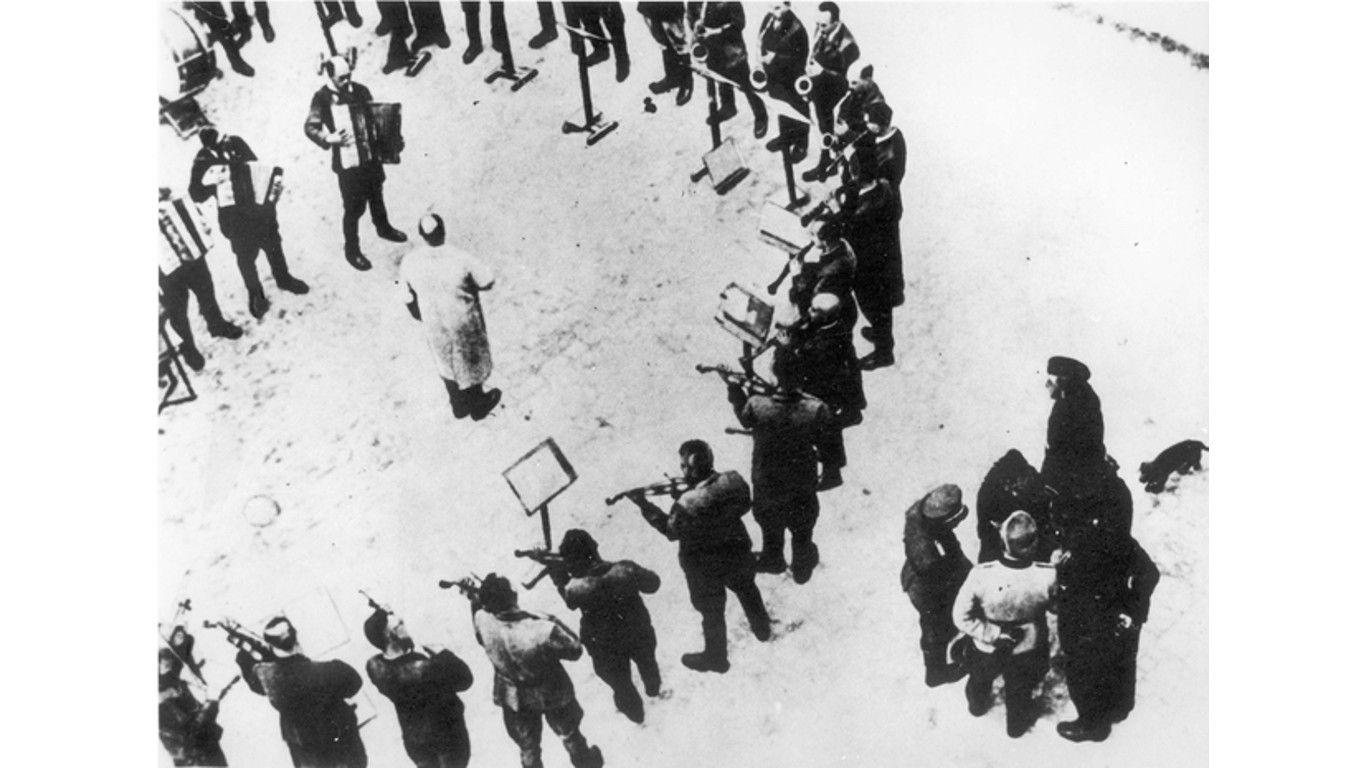
Janowska
> Country: Poland
> Years active: 1941-1943
> Purpose: Killing facility
> End: Destroyed
> Status today: Not maintained
The Janowska camp was located in southeastern Poland. It was opened as a forced-labor camp for Jews, where they did carpentry and metalwork. It later became an extermination camp itself and also served as a transit camp during the deportations of Polish Jews to other killing centers in 1942. The Germans planned to close the camp in 1943 and forced the prisoners to disinter graves and burn the bodies. The prisoners staged an uprising and tried to escape. Most were recaptured and executed, but some got away. The most famous inmate of the camp was Simon Wiesenthal, who survived to become a relentless post-war Nazi hunter.
[in-text-ad-2]
Majdanek
> Country: Poland
> Years active: 1941-1944
> Purpose: Killing facility
> End: Liberated by Soviet troops
> Status today: Museum
Majdanek was a concentration camp established several miles outside of the city of Lublin in July 1941 on orders from SS leader Heinrich Himmler. The camp was built to provide forced labor to produce construction materials and work on building projects for projected permanent German settlements in occupied Poland and the occupied Soviet Union.
In October 1942, the Nazis added gas chambers to Majdanek and began killing Jews upon arrival. When the Belzec extermination camp was shuttered in 1943, the Jews there were shifted to Majdanek. As part of Operation Harvest Festival, Himmler ordered their mass execution to suppress resistance. On Nov. 3, 1943, 18,400 Jews were shot and left in ditches, the largest single-day, single-location massacre of the Holocaust.
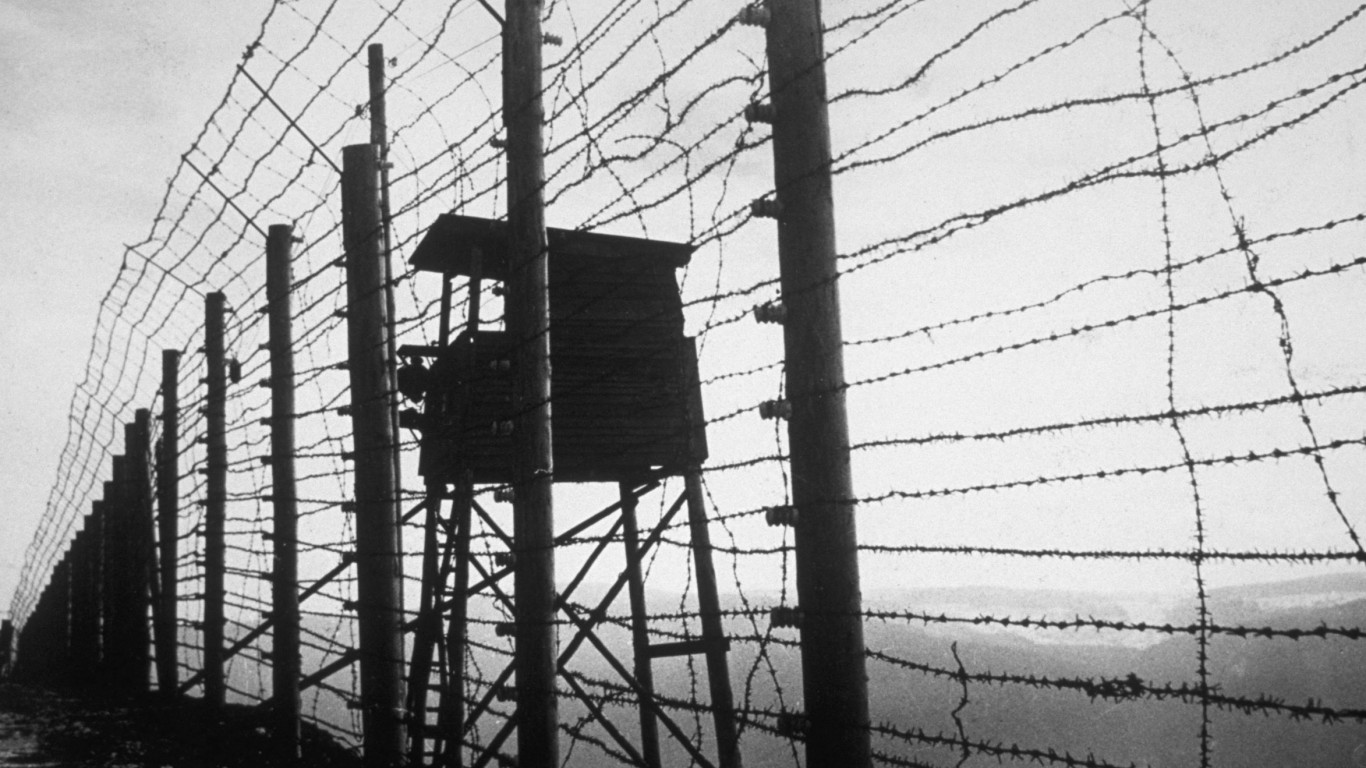
Natzweiler-Struthof
> Country: France
> Years active: 1941-1944
> Purpose: Forced labor
> End: Destroyed
> Status today: Preserved
Natzweiler-Struthof, opened about 30 miles southwest of Strasbourg, was one of the few concentration camps established in France. There were about 50 sub-camps in the Natzweiler-Struthof system. The camp held French resistance fighters, among others, and in 1943, a gas chamber was constructed there. The bodies of Jewish prisoners gassed there were sent to the Strasbourg University Institute of Anatomy where an anatomist amassed a collection of Jewish skeletons to try and establish Jewish “racial inferiority” by means of anthropological study. Other so-called science experiments were performed on Roma people at Natzweiler-Struthof.
[in-text-ad]
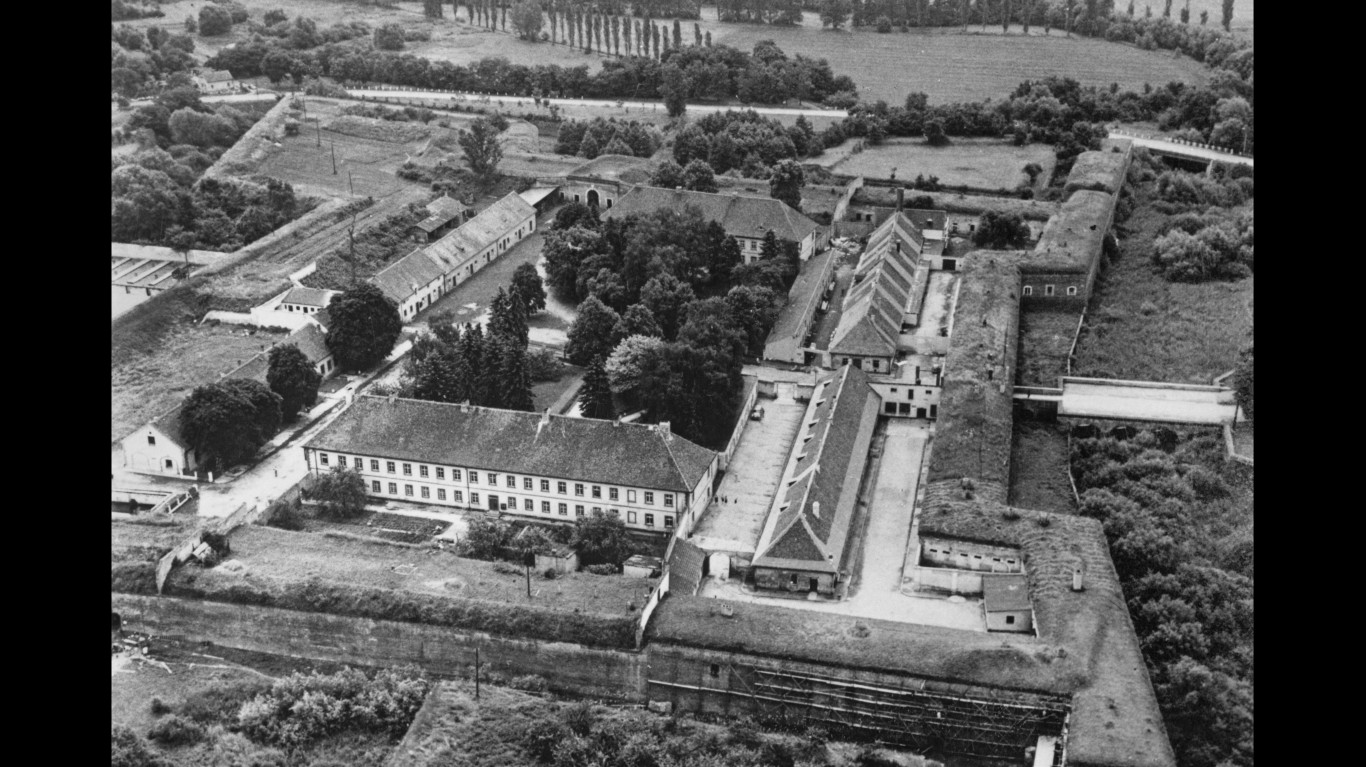
Theresienstadt Ghetto
> Country: Czechoslovakia
> Years active: 1941-1945
> Purpose: Holding center
> End: Liberated by Soviet troops
> Status today: Monument
Terezín was built as a fortress city to combat a possible invasion from the north by Austrian Emperor Joseph II in the 18th century, who named it in honor of his mother, Maria Theresa. In 1939, the SS chose it as the site of a holding station and transit camp, as well as a so-called “retirement settlement” that Hiitler claimed he was building to protect Jews from warfare. The ghetto soon teemed with famous Jewish musicians, writers, and artists, holding a population of 55,000 Jews at its height – many of whom died from starvation, exposure, and disease.

Belzec
> Country: Poland
> Years active: 1942
> Purpose: Killing facility
> End: Destroyed
> Status today: Monument
Following the Wannsee Conference, the Germans constructed an extermination camp at Belzec. It was built near railway lines to make transportation easier. The Nazis installed stationary gas chambers, labelled as showers, to kill people with carbon monoxide poisoning. The Jewish Virtual Library estimates the number of deaths at Belzec as up to 600,000 people, most Jews. The Germans closed the camp in December 1942.

Sobibor
> Country: Poland
> Years active: 1942-1943
> Purpose: Killing facility
> End: Destroyed
> Status today: Monument
Sobibor also was built near railway lines to facilitate transportation. It, too, used stationary gas chambers, disguised as showers, to eliminate victims with carbon monoxide gas. Inmates at Sobibor rose up against their captors on Oct. 14, 1943. They killed 11 SS men and many Ukrainian guards. Some 300 Jews escaped during the uprising, and about 50 of them survived. The Germans destroyed the camp after the revolt.
[in-text-ad-2]
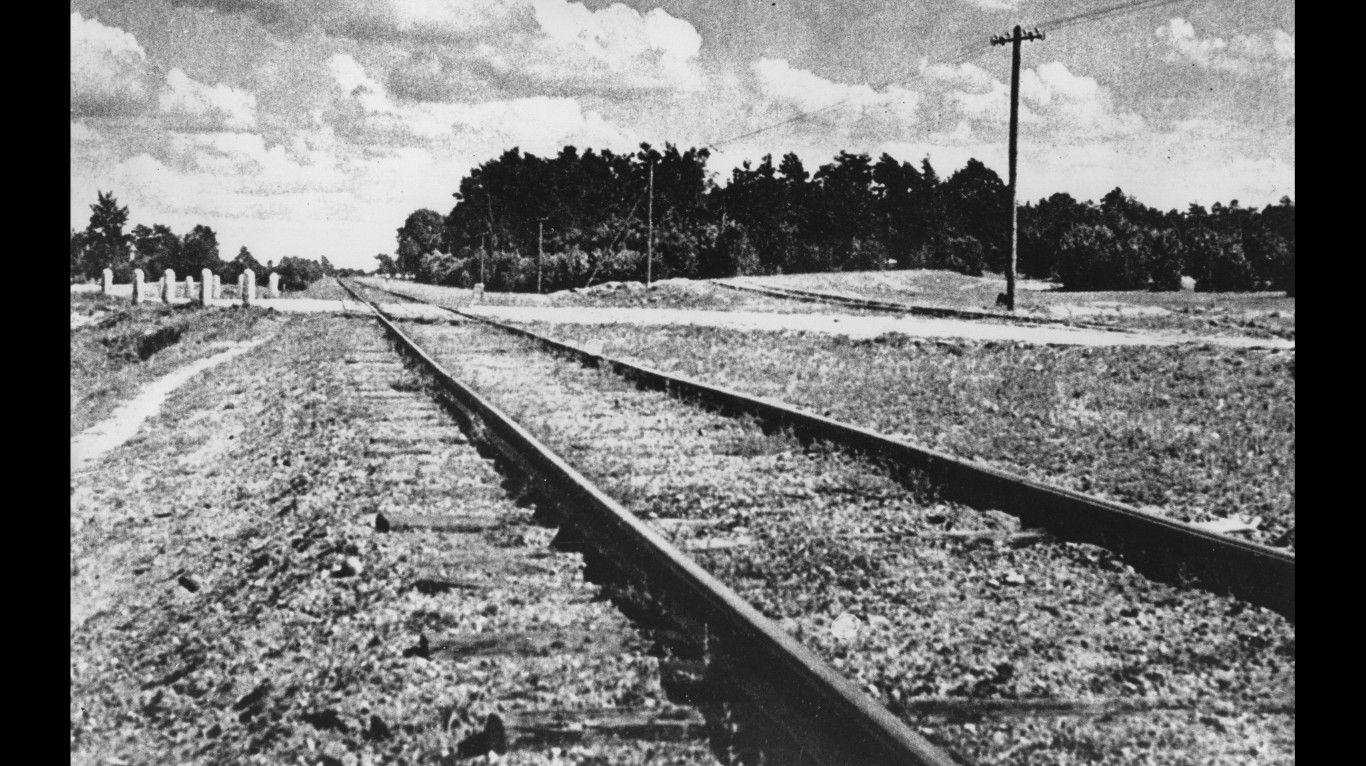
Treblinka
> Country: Poland
> Years active: 1942-1943
> Purpose: Killing facility
> End: Destroyed
> Status today: Monument
Treblinka was an extermination camp situated in the forests of northeastern Poland. It was constructed near railway lines for easier transportation of prisoners. At Treblinka, the Nazis used stationary gas chambers to kill their victims with carbon monoxide. According to the Jewish Virtual Library, between July 1942 and October 1943, about 850,000 people were murdered, including more than 800,000 Jews. The Germans destroyed the camp ahead of the Soviet advance.
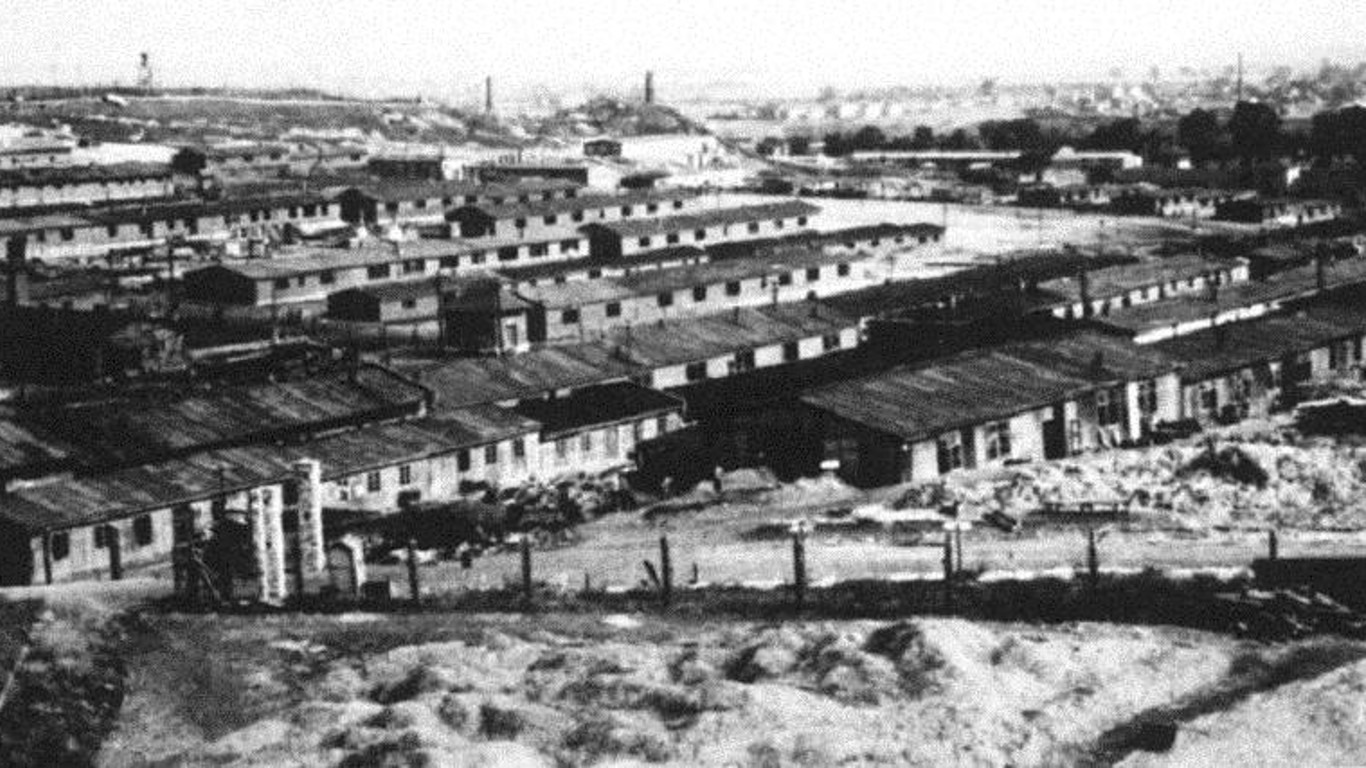
Kraków-Płaszów
> Country: Poland
> Years active: 1942-1945
> Purpose: Forced labor
> End: Destroyed
> Status today: Not maintained
Kraków-Płaszów was a concentration camp established near Kraków as a forced-labor center. During the war years, the camp gradually grew larger. The conditions at the camp’s stone quarries and local factories were awful, exacerbated by the sadistic behavior of SS camp commandant Amon Göth, who was depicted in the film “Schindler’s List.”
As Russian forces drove west toward the camp, the Germans started emptying the camp and tried to hide the crimes committed there. Many inmates were transferred to the Auschwitz, Mauthausen and Flossenbürg camps. Others were sent on death marches and thousands died either by starvation or summary execution by SS guards.
[in-text-ad]
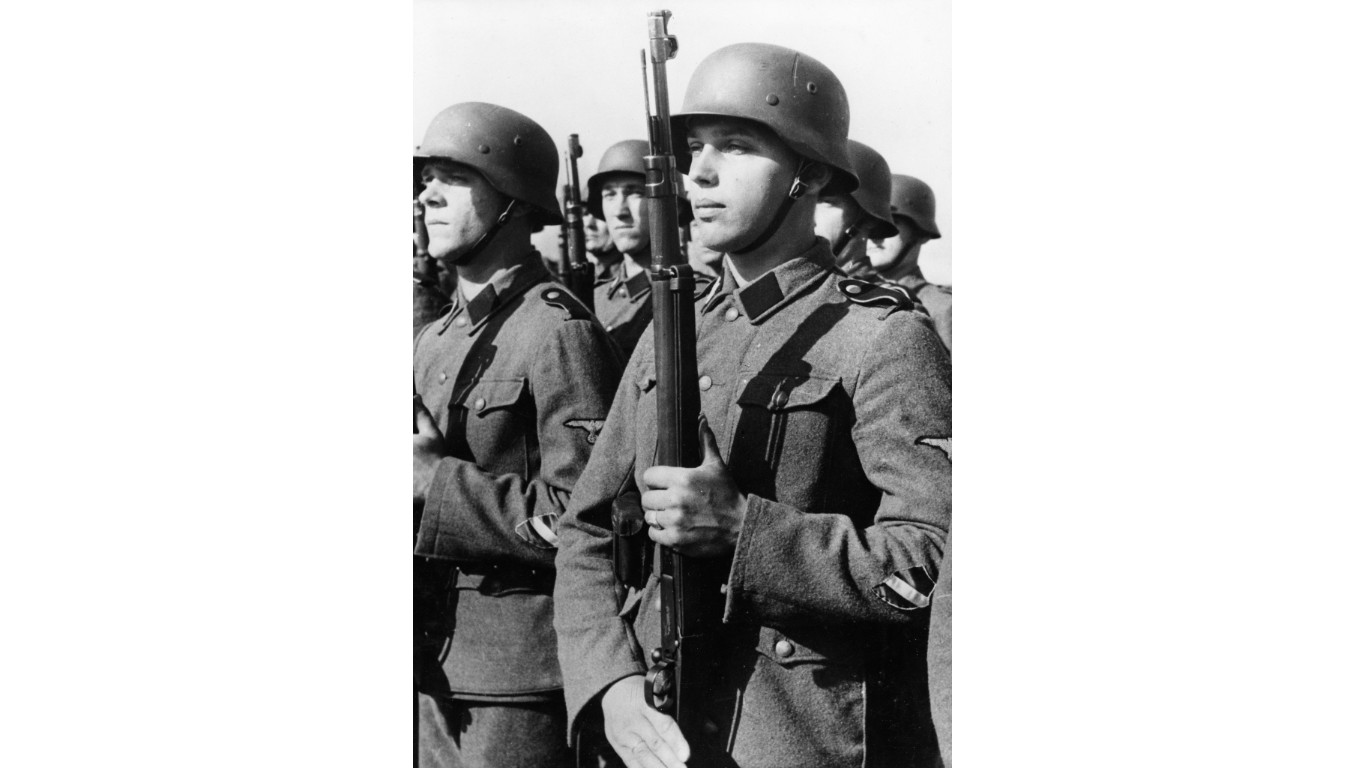
Kaiserwald
> Country: Latvia
> Years active: 1943-1944
> Purpose: Forced labor
> End: Liberated by Soviet troops
> Status today: Not maintained
Kaiswerwald was a camp opened for forced-labor purposes in Latvia, near its capital city of Riga. Originally meant to hold German convicts, it would eventually house Jews from Latvia and, later, from Hungary. German companies such as Allgemeine Elektricitäts-Gesellschaft used female inmates from Kaiserwald to make electrical goods. As the Red Army rolled back the Germans from Eastern Europe, the camp was evacuated in July 1944 and inmates sent to Stutthof in Poland. Before evacuation, German guards executed thousands of Jews who were deemed unfit for work.
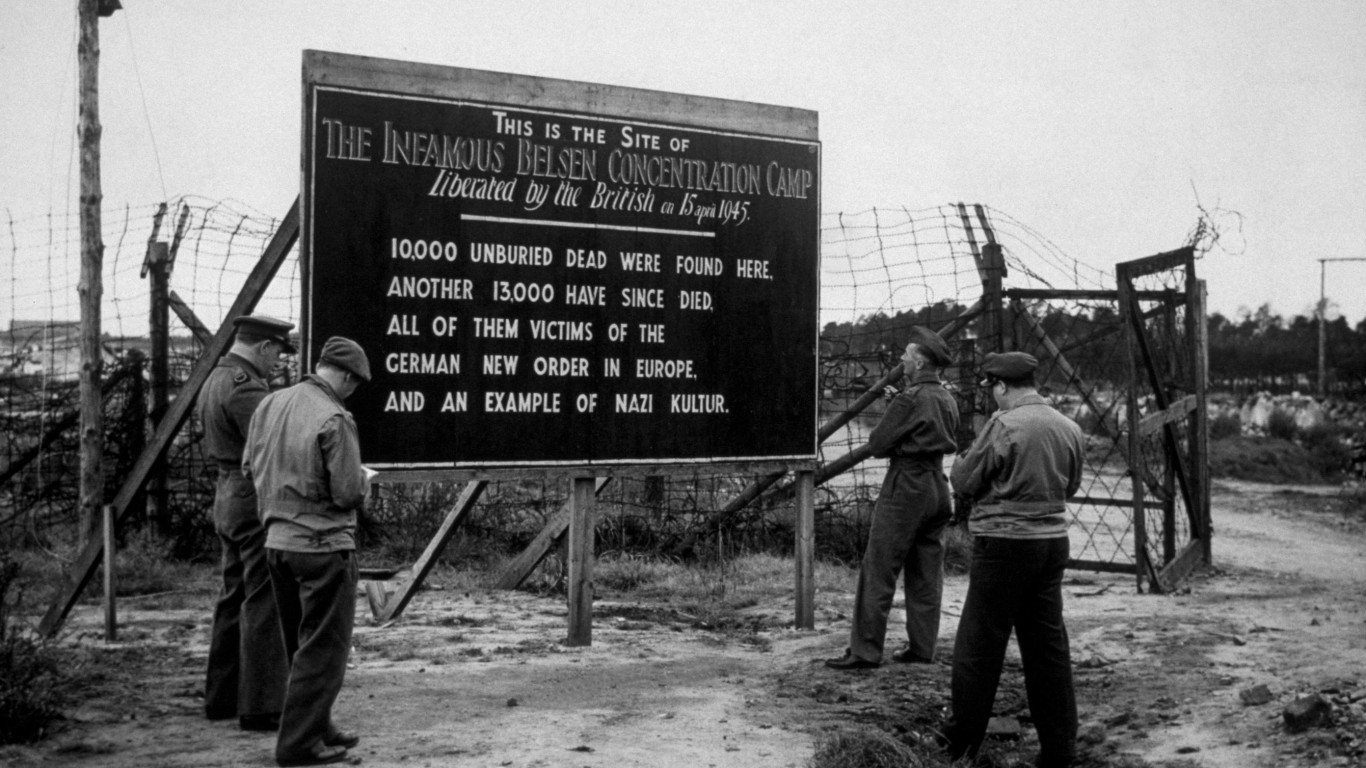
Bergen-Belsen
> Country: Germany
> Years active: 1943-1945
> Purpose: Holding center
> End: Liberated by British troops
> Status today: Graveyard
Bergen-Belsen was the first major concentration camp liberated by the western Allies and as such received a torrent of media attention because the 60,000 remaining prisoners were starving and afflicted with typhus. In its first years, the camp was a holding center for Jewish prisoners and other considered enemies of the Third Reich.
By the standards of concentration camps, conditions at Bergen-Belsen were more tolerable than most. It was not a forced labor facility. However, the situation got worse in 1944 as camps in the East such as Auschwitz were evacuated and prisoners sent to this already overcrowded facility. Anne Frank and her sister, Margot, died of typhus at Bergen-Belsen in March 1945, a month before the British liberated the camp.
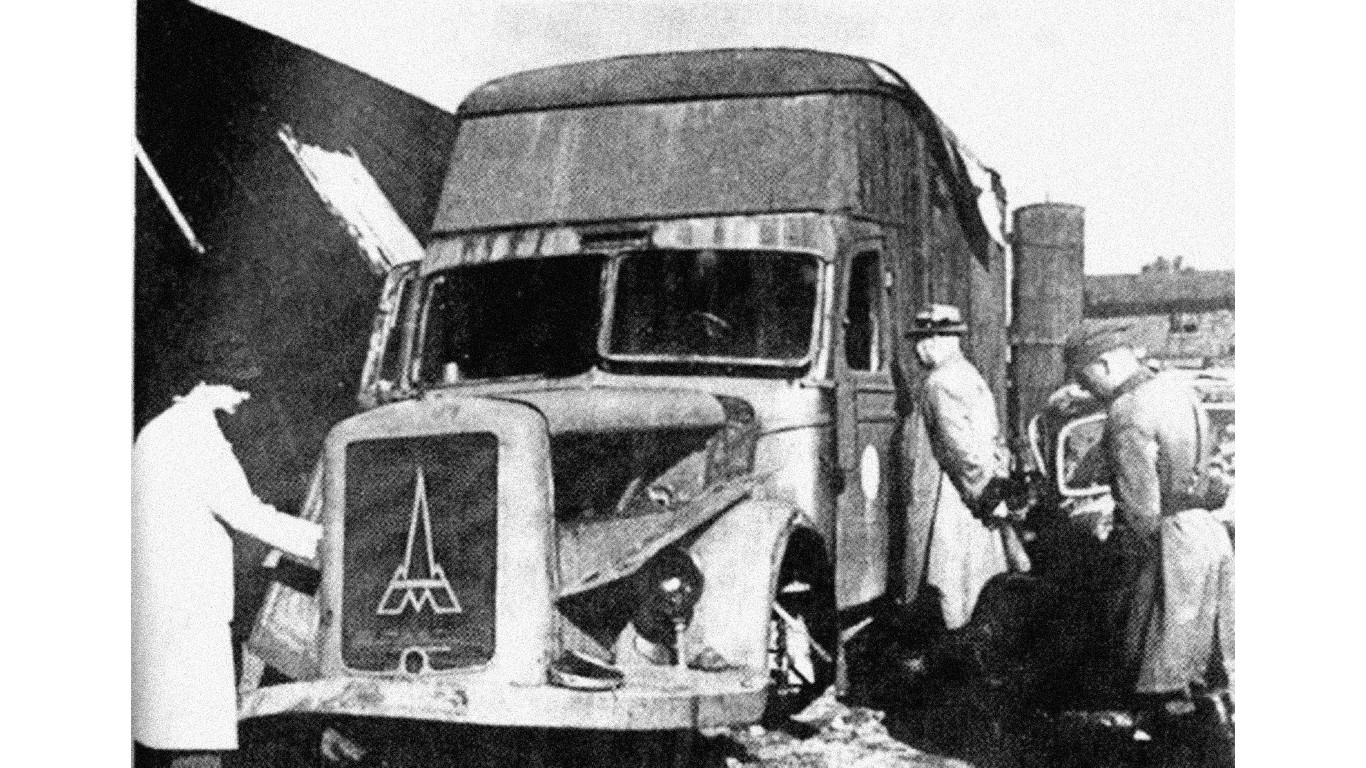
Chełmno
> Country: Poland
> Years active: 1941-1945
> Purpose: Killing facility
> End: Destroyed
> Status today: Monument
Chełmno, in west-central Poland, opened in December 1941, was the first camp established by the Nazis specifically for the extermination of Jews, and had the first facilities where poison gas – carbon monoxide – was used for mass murder. Its purpose was to eliminate the Jews of the surrounding area and the Łódź ghetto. Victims were poisoned in vans, and the vans were then driven to a nearby forest, where their bodies were buried in mass graves. Seven Jews, all on burial details, were known to have escaped from the camp. One escapee’s account of the horrors of the camp appeared in the July 2, 1942, edition of the New York Times.
[in-text-ad-2]
Dora-Mittelbau
> Country: Germany
> Years active: 1943-1945
> Purpose: Forced labor
> End: Liberated by U.S. troops
> Status today: Memorial sculpture
The Dora-Mittelbau camp, also called Dora-Nordhausen or Nordhausen-Dora, was located in central Germany near the southern Harz Mountains. It was originally a sub-camp of Buchenwald, then became an independent concentration camp with more than 30 sub-camps of its own. Because of Allied air raids on industrial areas in Germany, the prisoners dug huge, unstable tunnels into the surrounding mountains to house production and storage areas, many of them related to the development of the V-2 missile and other experimental weapons.
Inmates too weak to work were sent to Auschwitz-Birkenau or Mauthausen to be killed. In early April 1945, the Nazis began to evacuate the prisoners from Dora-Mittelbau, sending them of forced marches to Bergen-Belsen, during which thousands died.
It’s Your Money, Your Future—Own It (sponsor)
Retirement can be daunting, but it doesn’t need to be.
Imagine having an expert in your corner to help you with your financial goals. Someone to help you determine if you’re ahead, behind, or right on track. With SmartAsset, that’s not just a dream—it’s reality. This free tool connects you with pre-screened financial advisors who work in your best interests. It’s quick, it’s easy, so take the leap today and start planning smarter!
Don’t waste another minute; get started right here and help your retirement dreams become a retirement reality.
Thank you for reading! Have some feedback for us?
Contact the 24/7 Wall St. editorial team.

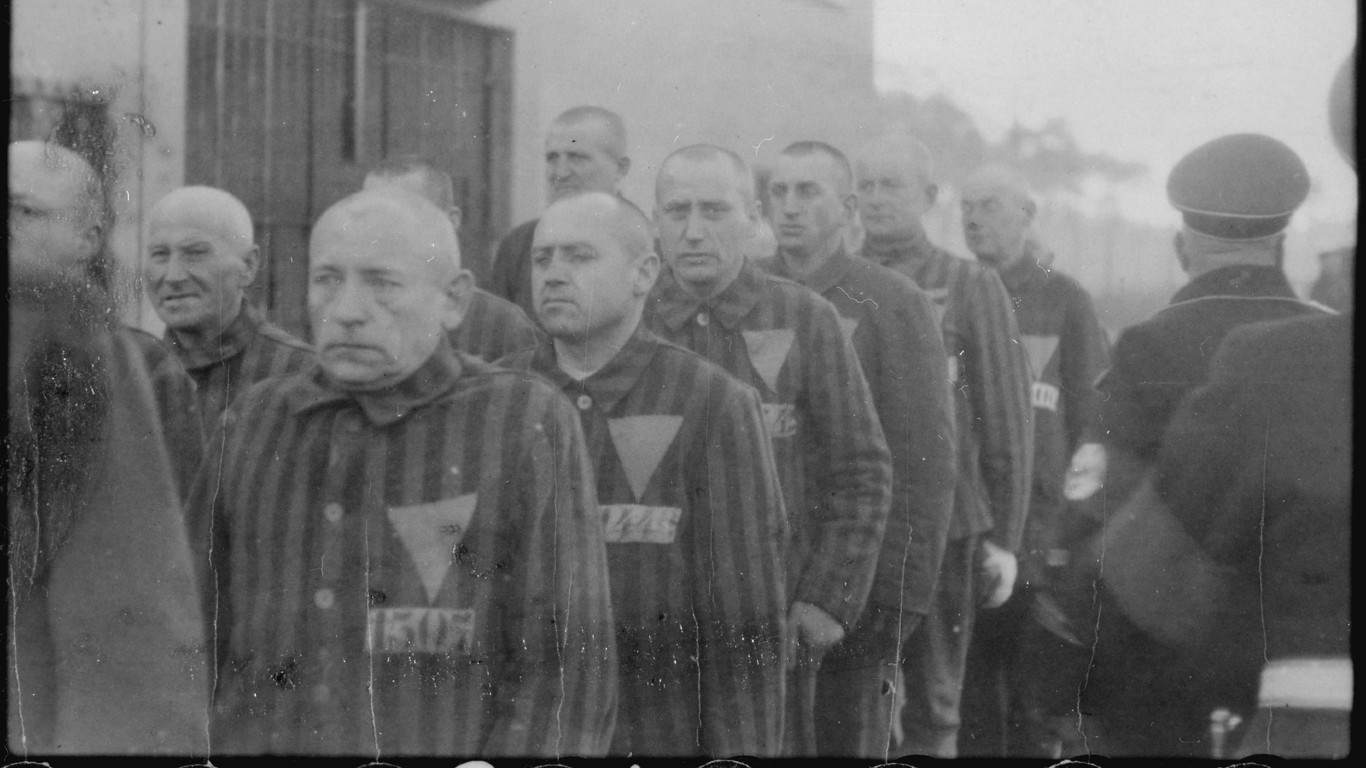 24/7 Wall St.
24/7 Wall St.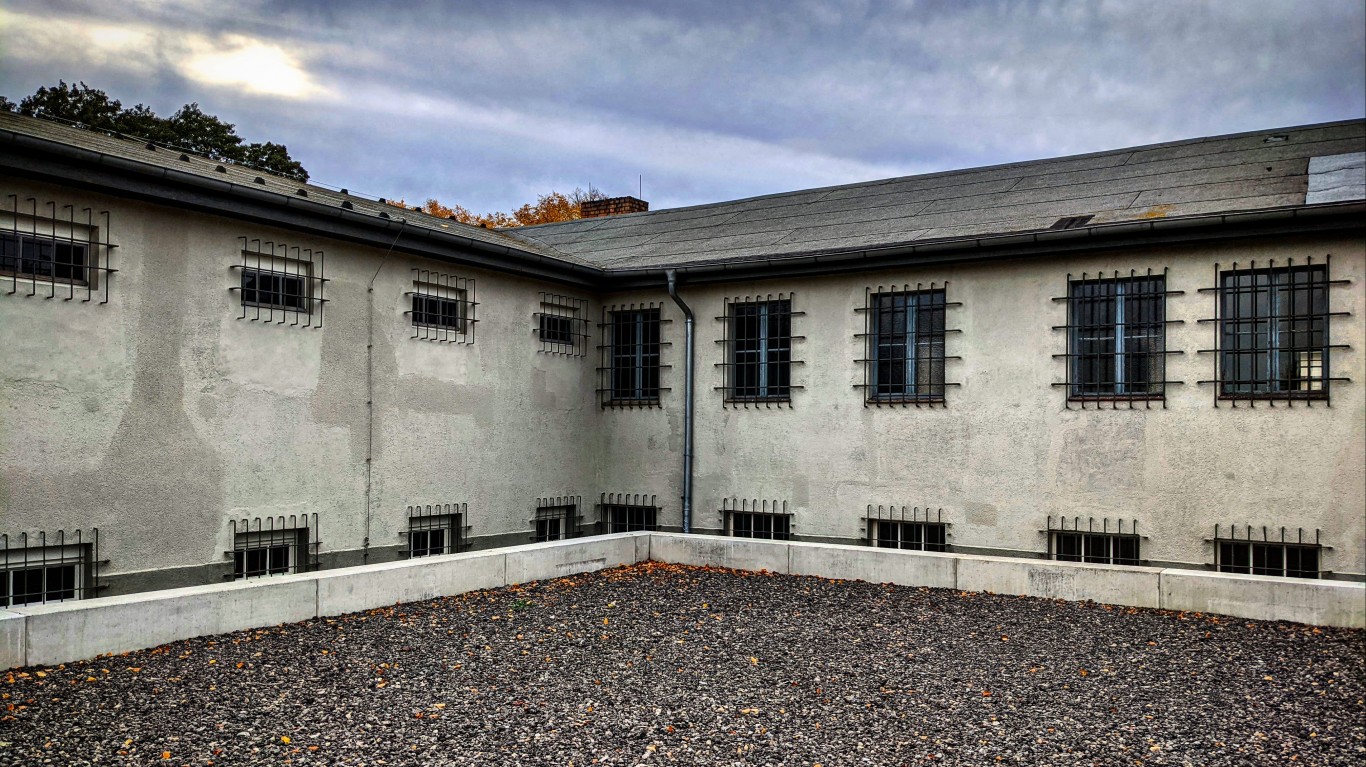


 24/7 Wall St.
24/7 Wall St.
